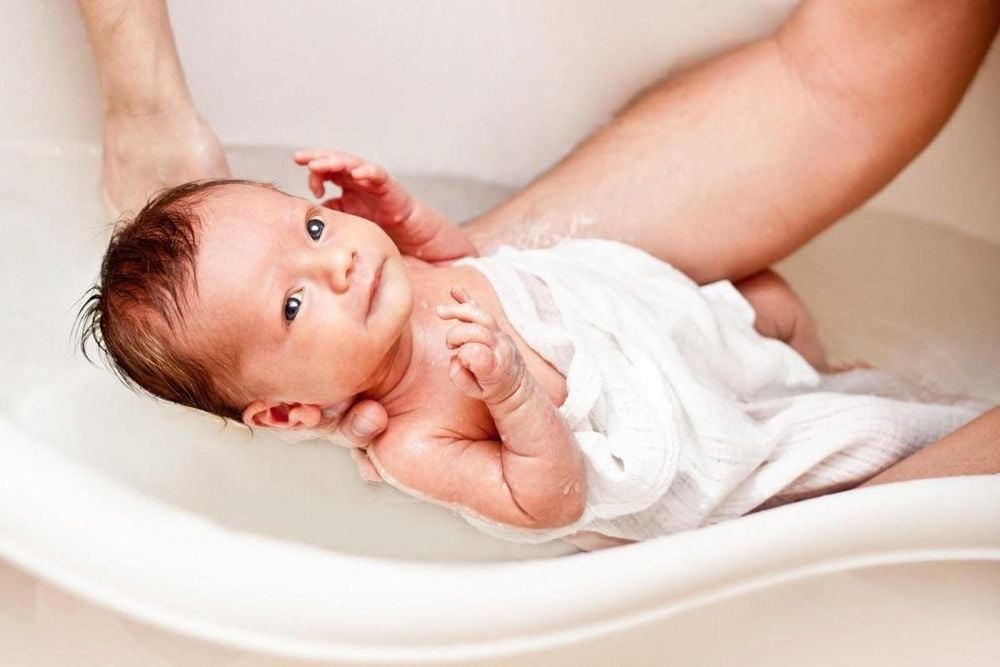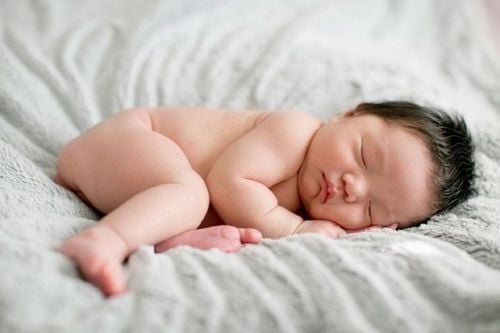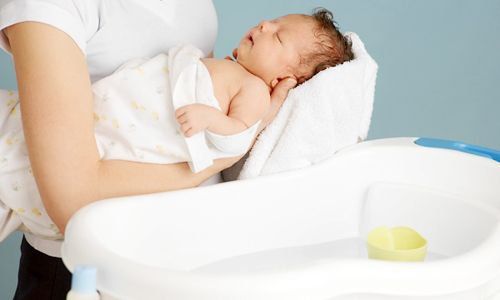This is an automatically translated article.
The article is professionally consulted by Master, Doctor Doan Ngoc Quynh Tram- Pediatrician - Neonatologist - Department of Pediatrics - Neonatology - Vinmec Nha Trang International General Hospital.Bath time can be a fun time, especially to share with your child. This is also a time to be cautious. Remember these bath tips to keep your child safe.
1. Supervise baby during bathing
The first and foremost rule is: Never leave your infant, 0-1 year old or toddler unattended, even for a minute. Children can drown in less than one centimeter of water. So, before you start, gather all the supplies (soap, towels, clean diapers, clean clothes, etc.) Always hold at least one of your baby's hands when he's in the water. If the doorbell or phone rings and you feel you have to answer, wrap your baby in a towel and take her with you.Do not put your baby or toddler in the tub while the water is still running. (The water temperature may change or the water may be too deep. Also, the sound of rushing water may be too intense for some babies.)
2. Be well prepared about the bathroom and bathtub
Make sure your baby's bathroom is safe and comfortably warm (about 75 degrees F or 25 degrees C), as little ones can get cold quickly.Make the home bath safe. Bathtubs are extremely slippery, so equip yourself with a rubber bath mat for a safer seat. A padded faucet cap or strategically wrapped handkerchief can protect from painful bumps. Also, make sure any sliding glass shower doors are made from safety glass.
Make the bath water comfortably warm. Test it with your wrist or the inside of your elbow to make sure it's not too hot. Babies and toddlers often prefer a cooler bath much more than you do.
Fill the tub only 2 to 4 cm with water for infants and no more than waist (when seated) for toddlers and older children.
3. Instructions for bathing your baby safely
Teach your child not to stand in the tub.If you want, bathe and clean your newborn with plain water, as long as you clean the diaper area and skin folds. Soaps and shampoos can dry out a baby's tender skin and can cause a rash. If you use soap, choose a gentle one designed for babies or toddlers and use sparingly. To avoid letting your child sit too long in soapy water, play at the start of the bath and save soap and shampoo for the end.
Avoid bathing with saliva as it can irritate the urethra and increase the risk of urinary tract infections.

Hãy tắm cho bé sơ sinh bằng nước thường
Keep electrical appliances (like hair dryers and curling irons) away from the tub when giving your baby a bath.
Please regularly visit Vinmec.com website and update useful information to take care of your baby and family.














